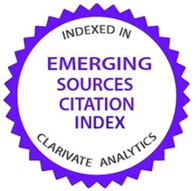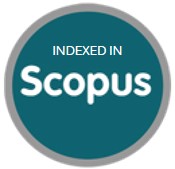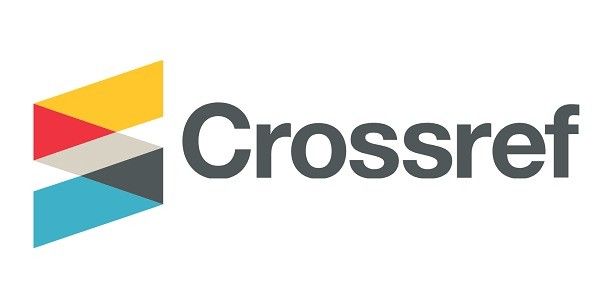La teoría de la guerra de distracción
DOI:
https://doi.org/10.21830/19006586.56Palabras clave:
teoría de la distracción, guerra de distracción, chivo expiatorio, conflicto externo, conflicto internoResumen
La teoría de la guerra de distracción o del chivo expiatorio ha sido utilizada por diversos autores para explicar la guerra internacional como una respuesta por parte del líder para distraer problemas internos. A continuación se presentan los principales planteamientos de esta teoría con el objetivo de resaltar las fortalezas y debilidades de ella, como un paso previo para una redefinición teórica aplicable al caso de América Latina, que se desarrollará posteriormente en el marco de la investigación Teoría de la distracción para los líderes de estilo populista en América Latina.
Descargas
Referencias bibliográficas
Aldrich, J., Sullivan, J. y Borgida, E. (1989). Foreign affairs and issue voting: Do presidential candidates" waltz before a blind audience? American Political Science Review, 83(1), 123-141.
https://doi.org/10.2307/1956437
Arena, P. (2008). Success Breeds Success? War Outcomes, Domestic Opposition, and Elections. Conflict Management and Peace Science, 25(2), 136-151.
https://doi.org/10.1080/07388940802007249
Baker, W. D. y Oneal, J. R. (2001). Patriotism or Opinion Leadership?: The Nature and Origins of the "Rally 'Round the Flag' Effect". The Journal of Conflict Resolution, 45(5), 661-687.
https://doi.org/10.1177/0022002701045005006
Bennett, D. S. y Nordstrom, T. (2000). Foreign Policy Substitutability and Internal Economic Problems in Enduring Rivalries. The Journal of Conflict Resolution, 44(1), 33-61.
https://doi.org/10.1177/0022002700044001003
Brace, P. y Hinckley, B. (1992). Follow the leader. Nueva York: Basic Books.
Brulé, D. (2006). Congressional Opposition, the Economy, and U.S. Dispute Initiation, 1946-2000. The Journal Of Conflict Resolution, 50(4), 463-483.
https://doi.org/10.1177/0022002706289180
Chiozza, G. y Goemans, H. E. (2004). Avoiding Diversionary Targets. Journal of Peace Research, 41(4), 423-443.
https://doi.org/10.1177/0022343304044475
Clark, D. H. (2003). Can Strategic Interaction Divert Diversionary Behavior? A Model of U.S. Conflict Propensity. The Journal of Politics, 65(4), 1013-1039.
https://doi.org/10.1111/1468-2508.t01-1-00123
Coser, L. (1956). The Functions of Social Conflict. Nueva York: The Free Press.
DeRouen, K. R. (1995). The Indirect Link: Politics, the Economy, and the Use of Force. The Journal of Conflict Resolution, 39(4), 671-695.
https://doi.org/10.1177/0022002795039004004
Domke, W. (1988). War and the changing global system. New Haven: Yale University Press.
Downs, G. W. y Rocke, D. M. (1994). Conflict, Agency, and Gambling for Resurrection: The Principal-Agent Problem Goes to War. American Journal of Political Science, 38(2), 362-380.
https://doi.org/10.2307/2111408
Duch, R. M. y Stevenson, R. T. (2008). The Economic Vote. How Political and Economic Institutions Condition Election Results. Cambridge: Cambridge University Press.
https://doi.org/10.1017/CBO9780511755934
Erikson, R. S. (1989). Economic Conditions and The Presidential Vote. American Political Science Review, 83(2), 567-573.
https://doi.org/10.2307/1962406
Fordham, B. O. (2005). Strategic Conflict Avoidance and the Diversionary Use. The Journal Of Politics, 67(1), 132-153.
https://doi.org/10.1111/j.1468-2508.2005.00311.x
Foster, D. M. (2006). State Power, Linkage Mechanisms, and Diversion against Nonrivals. Conflict Management and Peace Science, 23(1), 1-21.
https://doi.org/10.1080/07388940500503770
Foster, D. M. y Keller, J. W. (2010). Rallies and the "First Image": Leadership Psychology, Scapegoating Proclivity, and the Diversionary Use of Force. Conflict Management and Peace Science, 27(5), 417-441.
https://doi.org/10.1177/0738894210379327
Fravel, M. T. (2010). The Limits of Diversion: Rethinking Internal and External Conflict. Security Studies, 19(2), 307-341.
https://doi.org/10.1080/09636411003795731
Gelpi, C. (1997). Democratic Diversions: Governmental Structure and the Externalization of Domestic Conflict. The Journal of Conflict Resolution, 41(2), 255-282.
https://doi.org/10.1177/0022002797041002003
Gent, S. E. (2009). Scapegoating Strategically: Reselection, Strategic Interaction, and the Diversionary Theory of War. International Interactions, 35(1), 1-29.
https://doi.org/10.1080/03050620802497048
Gochman, C. S. y Maoz, Z. (1984). Militarized Interstate Disputes, 1816- 1976: Procedures, Patterns and Insights. Journal of Conflict Resolution, 28(4), 586-615.
https://doi.org/10.1177/0022002784028004002
Goemans, H. E. (2008). Which Way Out? The Manner and Consequences of Losing Office. The Journal of Conflict Resolution, 52(6), 771-794.
https://doi.org/10.1177/0022002708323316
Griffin, L., Wallace, M. y Devine, J. (1982). The political economy of military spending: Evidence from the United States. Cambridge Journal of Economics, 6(1), 1-14.
https://doi.org/10.1093/oxfordjournals.cje.a035497
Hagan, J. D. (1994). Domestic Political Systems and War Proneness. Mershon International Studies Review, 38(2), 183-207.
https://doi.org/10.2307/222714
Hess, G. D. y Orphanides, A. (1995). War Politics: An Economic, Rational-Voter Framework. The American Economic Review, 85(4), 828-846.
Hinckley, B. y Nincic, M. (1991). Foreign Policy and the Evaluation of Presidential Candidates. The Journal of Conflict Resolution, 35(2), 333-355.
https://doi.org/10.1177/0022002791035002009
International Telecommunication Union (2013). Measuring The Information Society 2013. s. d.
Kernell, S. (1978). Explaining presidential popularity: How Ad Hoc Theorizing, Misplaced Emphasis, and Insufficient Care in Measuring One's Variables Refuted Common Sense and Led Conventional Wisdom Down the Path of Anomalies. American Political Science Review, 72(2), 506-522.
https://doi.org/10.2307/1954107
Lebow, R. N. (1981). Between peace and war. Baltimore: Johns Hopkins University Press.
Leeds, B. A., y Davis, D. R. (1997). Domestic Political Vulnerability and International Disputes. The Journal of Conflict Resolution, 41(6), 814-834.
https://doi.org/10.1177/0022002797041006005
Levy, J S. (1989). The diversionary theory of war. En M. Midlarsky (Ed.), Handbook of war studies (pp.260-261). Boston: Unwin Hyman. New York: Oxford University Press.
Lewis-Beck, M. y Stegmaier, M. (2000). Economic Determinants of Electoral Outcomes. Annual Review of Political Science, 3, 183-219.
https://doi.org/10.1146/annurev.polisci.3.1.183
Lewis-Beck, M. y Stegmaier, M. (2007). Economic Models of Voting. En R. Dalton, y H. D. Klingemann, The Oxford Handbook of Political Behavior (pp. 518-537). Oxford,
https://doi.org/10.1093/oxfordhb/9780199270125.003.0027
MacKuen, M. (1983). Political drama, economic conditions, and the dynamics of presidential popularity. American Journal of PoliticalScience, 27(2), 165-192.
https://doi.org/10.2307/2111014
Maquiavelo, N. (1999). El príncipe. Barcelona: Espasa Libros.
Marra, R., Ostrom, C. y Simon, D. (1990). Foreign policy and presidential popularity. Journal of Conflict Resolution, 34(4), 588-623.
https://doi.org/10.1177/0022002790034004002
Michelitch, K., Morales, M., Owen, A. y Tucker, J. (2012). Looking to the Future: Prospective Economic Voting in 2008 Presidential Elections. Electoral Studies, 31(4), 838-851.
https://doi.org/10.1016/j.electstud.2012.04.002
Miller, R. A. (1995). Domestic Structures and the Diversionary Use of Force. American Journal of Political Science, 39(3), 760-785.
https://doi.org/10.2307/2111653
Miller, R. A. (1999). Regime Type, Strategic Interaction, and the Diversionary Use of Force. The Journal of Conflict Resolution, 43(3), 388-402.
https://doi.org/10.1177/0022002799043003006
Mitchell, S. M. y Prins, B. C. (2004). Rivalry and Diversionary Uses of Force. The Journal of Conflict Resolution, 48(6), 937-961.
https://doi.org/10.1177/0022002704269354
Monroe, K. R. (1978). Economic Influences on Presidential Popularity. Public Opinion Quarterly, 42(3), 360-369.
https://doi.org/10.1086/268459
Morey, D. S. (2009). Conflict and the Duration of Peace in Enduring Internal Rivalries. Conflict Management and Peace Science, 26(4), 331-345.
https://doi.org/10.1177/0738894209106479
Morgan, T. y Bickers, K. N. (1992). Domestic Discontent and the External Use of Force. The Journal of Conflict Resolution, 36(1), 25-52.
https://doi.org/10.1177/0022002792036001002
Nincic, M. y Cusack, T. (1979). The political economy of U.S. military spending. Journal of Peace Research, 16(2), 101-114.
https://doi.org/10.1177/002234337901600202
Norpoth, H. (1987). Guns and Butter and Government Popularity in Britain. The American Political Science Review, 81(3), 949-959.
https://doi.org/10.2307/1962685
Oneal, J. y Lian ,B. (1992). Presidents, the Use of Military Force, and Public Opinion (Working Paper). Standford: Hoover Institution, Stanford University.
Richards, D., Morgan, T. C., Wilson, R. K., Schwebach, V. L., y Young, G. D. (1993). Good Times, Bad Times, and the Diversionary Use of Force: A Tale of Some Not-So-Free Agents. The Journal of Conflict Resolution, 37(3), 504-535.
https://doi.org/10.1177/0022002793037003005
Russett, B. (1990). Economic Decline, Electoral Pressure, and the Initiation of International Conflict. En C. Gochman y N. Sabrosky (Eds.), The Prisoners of War (pp. 123-140). Lexington: Lexington Books.
Simmel, G. (1955). Conflict And the Web of Group-Affiliations. Nueva York: The Free Press.
Smith, A. (1996). Diversionary Foreign Policy in Democratic Systems. International Studies Quarterly, 40(1), 133-153.
https://doi.org/10.2307/2600934
Sobek, D. (2007). Rallying Around the Podesta: Testing Diversionary Theory Across Time. Journal of Peace Research, 44(1), 29-45.
https://doi.org/10.1177/0022343307072178
Sonoski, P. J. (1997). Facilitating the Diversionary Theory of War: The President and the Media in U.S. Foreign Policy. (Tesis de maestría). The University of Western Ontario.
Vasquez, J. (1993). The War Puzzle. Cambridge: University Press.
https://doi.org/10.1017/CBO9780511583483
Williams, R., M., (1947). The Reduction of Intergroup Tensions. Nueva York: Social Science Research Council.
Wright, Q. (1964). A Study of War. Chicago: The University of Chicago Press.
Zinnes, D. y Wilkenfeld, J. (1971). An analysis of foreign conflict behavior of nations. En W. F. Hanrieder (Editor), Comparative Foreign Policy: Theoretical Essay. (pp. 167-213). Nueva York: McKay.
Descargas
Publicado
Cómo citar
Número
Sección

| Estadísticas de artículo | |
|---|---|
| Vistas de resúmenes | |
| Vistas de PDF | |
| Descargas de PDF | |
| Vistas de HTML | |
| Otras vistas | |
























